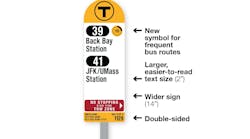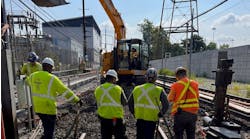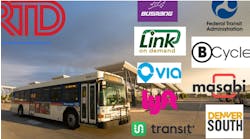I’m a sucker for points. I enjoy playing games on my phone that allow me to score points, especially when it gets me “free stuff.” Companies have figured this out about me (and millions of others) and figured out how to entice me to use their mobile applications (app) to order items I’m already purchasing on a regular basis. They’ve gamified my purchases – where the more I order, the more points I get toward winning their products for free. (Think Dunkin’ Donuts, Marriott and Southwest Airlines apps giving me points toward free food, drinks, hotel rooms and flights.) I find myself almost enjoying spending my money on these merchants because I get rewards when I do and I spend more money with them as a result.
The merchants love when I use their apps because they get all kinds of data on me (what I like, when I eat, where I like to travel, etc.), building my loyalty toward their product or service. Now I want to drink my coffee always from Dunkin’ because I’m working toward that free one. When there are two or more options, I choose Dunkin’. In a recent study from KPMG, 74 percent of consumers will go out of their way to shop where they earn loyalty points. So, it’s not just me that makes purchase decisions based on the loyalty programs in which they belong.
There are clear positive outcomes from utilizing loyalty programs and gamification, so why hasn’t the transit industry taken advantage of this more?
Examples of loyalty programs and gamification in public transit
Currently, the efforts of loyalty programs in public transit fall into two groups. I call these:
- First-level efforts– those using drawings and cards for rewards and discounts
- Second-level efforts – those using smartphone apps and geolocation data for rewards, discounts and to gather ridership data for the agency
First-level efforts
One of the first efforts in the U.S. was Minnesota’s Ride to Rewards Program. Launched in November 2010, the rewards program offered public transit riders points for using Go-To Cards. Users then could redeem points for $5 to $10 gift cards, to use anywhere they wish. But it was killed after three years due to funding issues.
In Connecticut, the state’s Department of Transportation recently announced a transit rewards program where passengers can show their transit ticket or pass to 50 participating merchants for discounts.
Other systems like Valley Metro in Phoenix use merchant $25 gift card prizes to lure passengers to try ridesharing programs or to shift their trips to off-peak times, like the short-lived BART Perks program in San Francisco and the Chicago Transit Authority pilot a couple of years ago.
The Southeastern Pennsylvania Transit Authority’s (SEPTA) “SEPTA Perks” loyalty program rewards the authority’s daily, weekly and monthly pass holders with discounts and special offers for museums, restaurants and shops across the SEPTA service region. They also have contests for riders to win prizes, such as autographed hockey sticks.
Second-level efforts
The Des Moines Area Regional Transit Authority is using TransTrack Systems Inc. TransTrack Manager TM tools for a fantasy football-style application for its road supervisors to use as a tool to manage operators and improve performance, according to TransTrack CEO Dave Jackson. The operators choose their teams annually and compete on a quarterly basis for the best scores. Points are added or deducted as appropriate for on-time performance, preventable accidents, lost time injuries, complaints and commendations. The scoring is automated using the software, awarding a traveling “winner” and “loser” trophy each quarter.
One successful gamified program helps transit riders in Tennessee who can earn at least a penny per shared mile ride using a special mobile app from Hytch. They have corporate sponsorship from Nissan and other funding to pay for rewards. Their loyalty program has partnerships with WeGo Public Transit, Music City Star and the Regional Transportation Authority of Middle Tennessee. In heavily congested areas, such as Nashville, riders can earn additional cash rewards from multiple sponsors and can redeem rewards via PayPal (once their balance reaches $10) and they can choose how to spend their earned rewards.
Stephen Bland, Nashville’s WeGo Public Transit System CEO asserted, “The program is working well and has been well received by riders. Some of our regular commuters are reporting savings on their commute costs of over 50 percent per month. In addition, because of the innovative nature of the program, we've calculated over $55,000 in earned media value (local) from the program (generally, from news stories not only promoting the app but promoting transit service).”
Many Canadian transit systems use gamification through the Transit App to encourage users to crowdsource their vehicle position with other riders, which provides them with precise real-time information. Users get a ranking for each route and, depending on how many riders their info helps, can become “King” or “Queen” or their route. The program first launched in Montreal with huge success and is now available in other Canadian cities and throughout the world using the Transit App.
Around the world
An Israeli technology startup venture, Enroute, has an online loyalty program operating with Deutsche Bahn (a train system in Germany) where commuters can earn credits toward discounts and free rides on the train by shopping online at major retailers through their portal available from the Wi-Fi on board the train. The transit agency also receives an additional revenue stream from this service.
Public transport users in Moscow can earn loyalty rewards as they travel around the Russian capital. Billed as “the largest loyalty program in Moscow,” the program has more than 5,000 participating retail outlets and is available to the 9 million Troika transit card cardholders. After downloading the city mobile app and registering their Troika card number, users collect bonus points when they add funds to their travel card or make purchases at participating retailers. These can be exchanged for trips on Moscow’s public transport network or discounts in shops and at online stores.
How to design a loyalty gamification rewards program
While many major transit systems have a loyalty program, not all of them are gamified with points toward rewards. Gamification may be a simple addition that can add value to transit agencies and their passengers.
For transit agencies to establish a loyalty program that includes gamification successfully, they should keep it:
- Simple – Easy to understand point levels/prizes and simple to sign up
- Digital – Use a smartphone app to track
- Valuable – Have good prizes for users including free rides and discounts for shops along your routes. Gather quality data from the riders that improves your transit system to make it valuable for your agency
Dr. Robert Schneider, executive director of Northern Virginia’s OmniRide Transit System said, “Mass transit has truly evolved in the past 20 years with much-improved marketing, branding and messaging. We’ve embraced technology, which gives us the chance to finally build a level of loyalty between the organization and its customers.
“Gamification lets us communicate with our customers and gain feedback. Miles and trips can convert to points, which turn to cash, credits or rewards for free rides, discounts or actual prizes. How about three points for answering three questions about the bus stop’s cleanliness? Double points for trying a new route? What about badges for riding every route? The key is building loyalty between our customers and our systems—a passion, like what exists between a sports team and its fans.”
These successful models show that transit systems can reach out to millennials and new users plus reward existing passengers by gamifying loyalty programs. This can only help in stabilizing or even increasing ridership levels.



